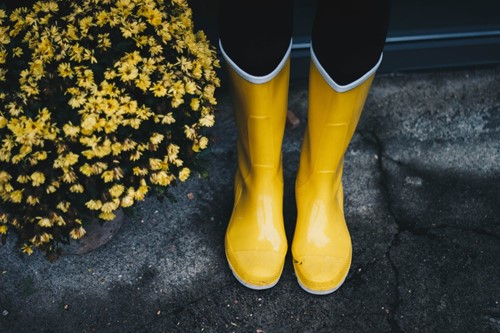
When building a new home, builders put a water-resistant coating on any part of the block crawlspace or basement that is underground. This is typically good enough to protect your foundation for years. However, after time, or if you have a drainage problem, the coating becomes less effective. Moisture and even water can seep into your basement or crawlspace and cause issues.
What Does Waterproofing Do?
Besides the obvious of keeping water out of your basement, waterproofing reduces overall dampness and helps to prevent mold and mildew from forming. Concrete is porous, thus water can seep through it. If you have enough water against your foundation during the rainy season, it will eventually make its way through even the thickest concrete. Waterproofing can also help seal any cracks in a concrete basement, slab or crawlspace.
Keeping a Foundation Waterproofed
If you are building your house on a downslope, the construction company should put a grade against the foundation. However, grades erode over time, especially without properly installed gutters. Water will eventually pool against the foundation and get inside. When building your home, look at the lay of the land. Even though the construction company waterproofs your basement, you should add extra drainage near the house. You can install a French drain to move water coming toward the house away from the foundation. You can also ask your builder to put better waterproofing materials on the exterior of your basement or crawlspace. It's much easier to do this before they backfill.
Types of Waterproofing
The most common type of waterproofing in modern homes is a layer of tar painted or sprayed onto basement or crawlspace walls below ground. However, there are a few more types of waterproofing you can upgrade to:
Sheet-Based Membranes
The membranes come in a rolls. Builders use a hot tar-based adhesive to stick the waterproofing membrane sheets to the walls of the basement or crawlspace. Self-adhesive membranes are also available, but don't last as long as the membranes attached with separate adhesive.
Liquid-Applied Membranes
Most liquid-applied membranes consist of a primer coat and up to two coats of waterproofing. Builders can apply the primer and the liquid membrane via a brush, spray or roller. One advantage of liquid-applied membranes is that they don't have joints. However, if the builder doesn't apply the membrane in the right thickness, it could break or tear.
Cement and Bitumen-Based Waterproofing
These products are applied on the exterior or interior of a basement or crawlspace, but is usually used inside in areas that are often wet, such as bathrooms. Since these materials are frequently used inside, this option doesn't contract and expand with the temperature as much as they would outside.
Silicone Polymers
Silicone polymers are highly flexible, which makes them great for exterior use where hot and cold weather cause expansion and contraction. The builder can spray or brush a silicone polymer on. Since the liquid cures in the air, it creates a seamless membrane with no cracks.
Issues Caused by Poor Waterproofing or Cracked Waterproofing
If the builder doesn't properly apply the waterproofing or the waterproofing cracks over time, water will seep into your basement or crawlspace. The moisture then seeps into your home and increases humidity. If you don't control the humidity, mold and mildew form. In turn, the mold and mildew cause health issues, including asthma and allergies. Once mold and mildew form, it can be very difficult to get rid of it without professional help. If you have to spend money on mold remediation, make sure the company you hire can waterproof your foundation and, if necessary add additional drainage solutions.
It is advisable to take part in the planning stages, and to ensure that the builder uses sub-contractors who won't take short cuts in any part of the project. This applies especially to waterproofing.
About the Author
